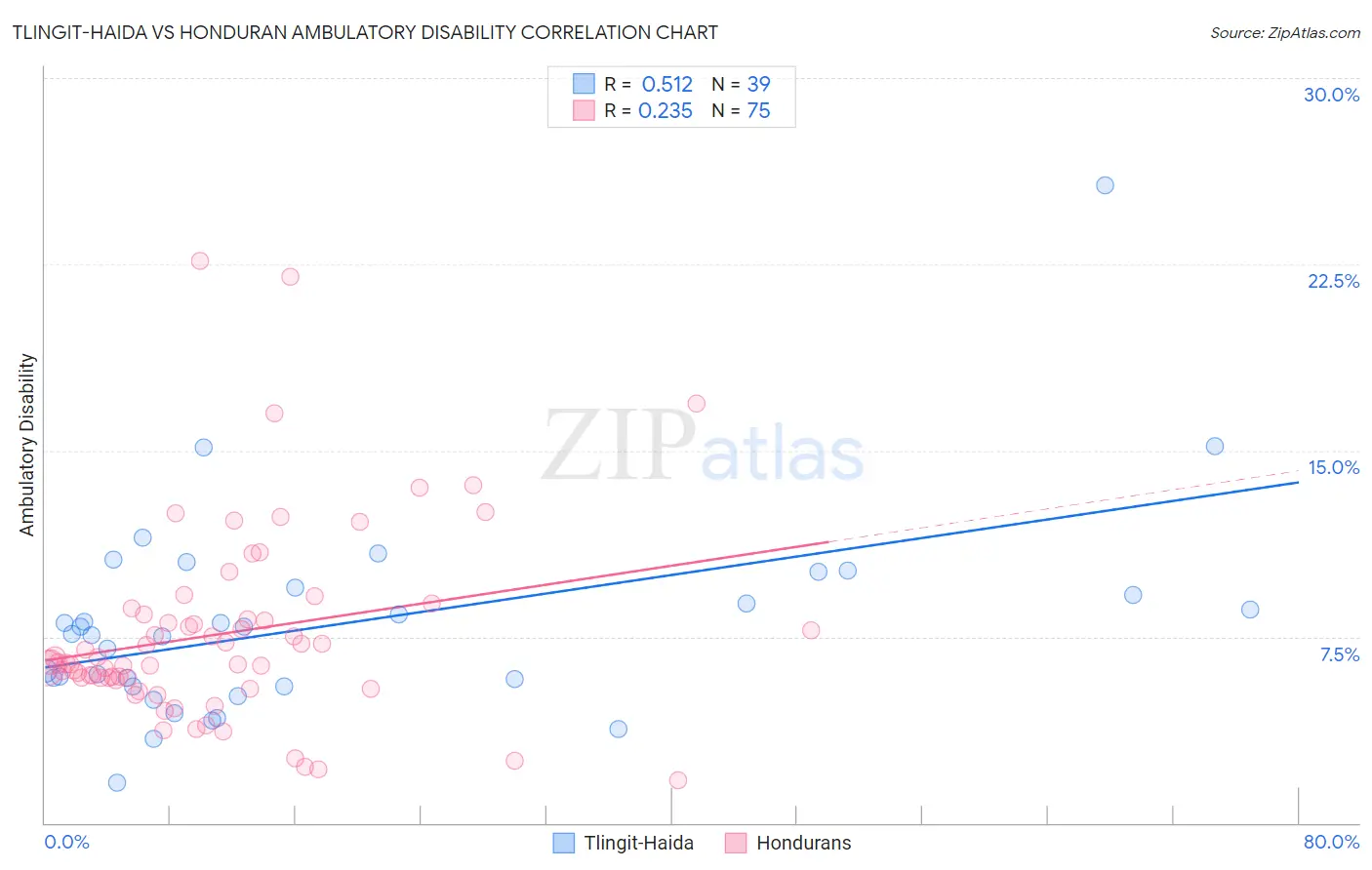Tlingit-Haida vs Honduran Ambulatory Disability
COMPARE
Tlingit-Haida
Honduran
Ambulatory Disability
Ambulatory Disability Comparison
Tlingit-Haida
Hondurans
6.5%
AMBULATORY DISABILITY
1.5/ 100
METRIC RATING
245th/ 347
METRIC RANK
6.3%
AMBULATORY DISABILITY
6.3/ 100
METRIC RATING
225th/ 347
METRIC RANK
Tlingit-Haida vs Honduran Ambulatory Disability Correlation Chart
The statistical analysis conducted on geographies consisting of 60,848,336 people shows a substantial positive correlation between the proportion of Tlingit-Haida and percentage of population with ambulatory disability in the United States with a correlation coefficient (R) of 0.512 and weighted average of 6.5%. Similarly, the statistical analysis conducted on geographies consisting of 357,719,276 people shows a weak positive correlation between the proportion of Hondurans and percentage of population with ambulatory disability in the United States with a correlation coefficient (R) of 0.235 and weighted average of 6.3%, a difference of 1.9%.

Ambulatory Disability Correlation Summary
| Measurement | Tlingit-Haida | Honduran |
| Minimum | 1.6% | 1.7% |
| Maximum | 25.7% | 22.6% |
| Range | 24.0% | 20.9% |
| Mean | 8.0% | 7.6% |
| Median | 7.6% | 6.4% |
| Interquartile 25% (IQ1) | 5.5% | 5.8% |
| Interquartile 75% (IQ3) | 9.5% | 8.4% |
| Interquartile Range (IQR) | 4.0% | 2.6% |
| Standard Deviation (Sample) | 4.1% | 3.9% |
| Standard Deviation (Population) | 4.1% | 3.9% |
Demographics Similar to Tlingit-Haida and Hondurans by Ambulatory Disability
In terms of ambulatory disability, the demographic groups most similar to Tlingit-Haida are Immigrants from Panama (6.5%, a difference of 0.030%), German (6.5%, a difference of 0.040%), Spaniard (6.5%, a difference of 0.060%), Immigrants from Haiti (6.5%, a difference of 0.090%), and Immigrants from Senegal (6.4%, a difference of 0.17%). Similarly, the demographic groups most similar to Hondurans are Slavic (6.4%, a difference of 0.27%), Cuban (6.4%, a difference of 0.60%), Portuguese (6.4%, a difference of 0.61%), Czechoslovakian (6.4%, a difference of 0.66%), and Mexican (6.4%, a difference of 0.77%).
| Demographics | Rating | Rank | Ambulatory Disability |
| Hondurans | 6.3 /100 | #225 | Tragic 6.3% |
| Slavs | 5.1 /100 | #226 | Tragic 6.4% |
| Cubans | 4.0 /100 | #227 | Tragic 6.4% |
| Portuguese | 4.0 /100 | #228 | Tragic 6.4% |
| Czechoslovakians | 3.8 /100 | #229 | Tragic 6.4% |
| Mexicans | 3.5 /100 | #230 | Tragic 6.4% |
| Panamanians | 3.1 /100 | #231 | Tragic 6.4% |
| Assyrians/Chaldeans/Syriacs | 2.4 /100 | #232 | Tragic 6.4% |
| Sub-Saharan Africans | 2.3 /100 | #233 | Tragic 6.4% |
| Immigrants | Liberia | 2.3 /100 | #234 | Tragic 6.4% |
| Hispanics or Latinos | 2.2 /100 | #235 | Tragic 6.4% |
| Dutch | 2.0 /100 | #236 | Tragic 6.4% |
| Immigrants | Germany | 1.8 /100 | #237 | Tragic 6.4% |
| Haitians | 1.8 /100 | #238 | Tragic 6.4% |
| Senegalese | 1.7 /100 | #239 | Tragic 6.4% |
| Immigrants | Senegal | 1.7 /100 | #240 | Tragic 6.4% |
| Immigrants | Haiti | 1.6 /100 | #241 | Tragic 6.5% |
| Spaniards | 1.6 /100 | #242 | Tragic 6.5% |
| Germans | 1.5 /100 | #243 | Tragic 6.5% |
| Immigrants | Panama | 1.5 /100 | #244 | Tragic 6.5% |
| Tlingit-Haida | 1.5 /100 | #245 | Tragic 6.5% |